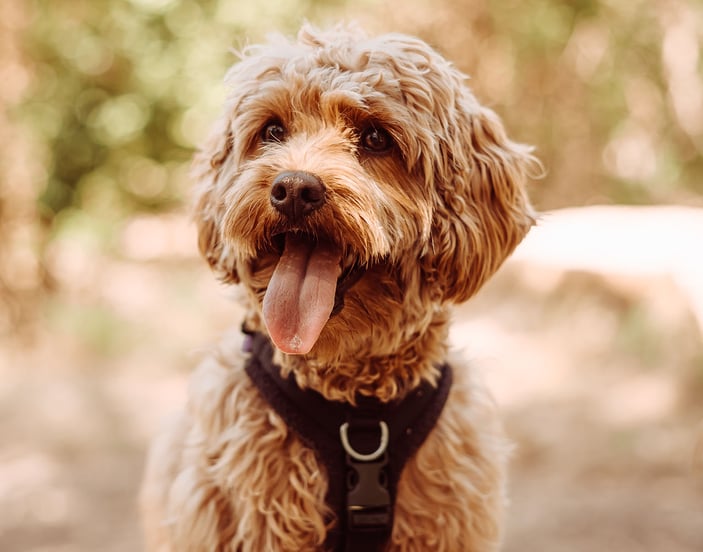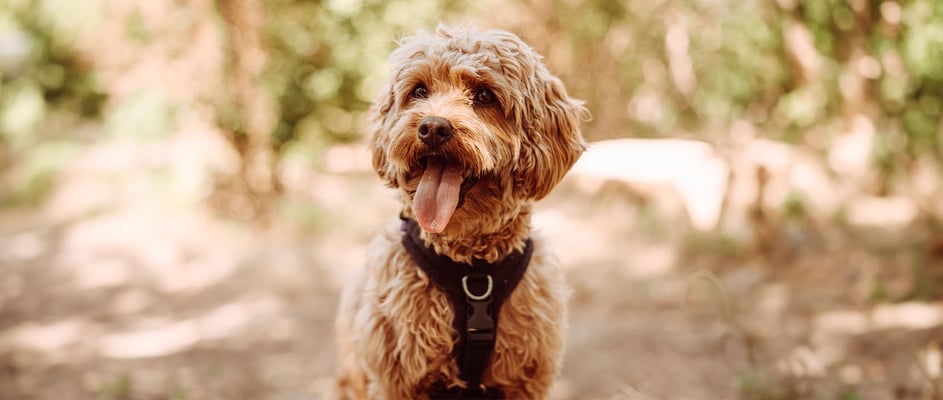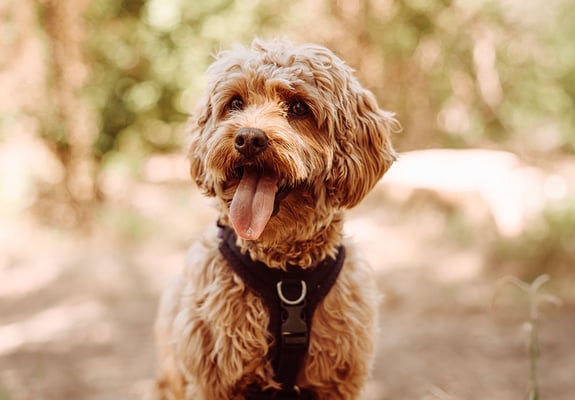The guide to owning a Cavapoo.
Want to know everything there is to know about finding the right dog for you? Submit your email below, and we’ll send you a one-stop guide to help you on your pet-ownership journey.
Jump to:
Stats at a glance
A history of Cavapoos
The Cavapoo, also called the Cavoodle, is a beloved mixed breed dog that combines the Cavalier King Charles Spaniel and the Poodle. This adorable crossbreed emerged in the late 20th century through intentional breeding efforts, aiming to merge the positive traits of two distinct purebred dog types.
The story of the Cavapoo begins in Australia during the 1990s when innovative breeders sought to unite the gentle and affectionate nature of the Cavalier King Charles Spaniel with the Poodle's intelligence and hypoallergenic coat. The result? The Cavapoo is a charming companion that quickly gained popularity for its friendly demeanour, low-shedding coat, and adaptability to various living situations.
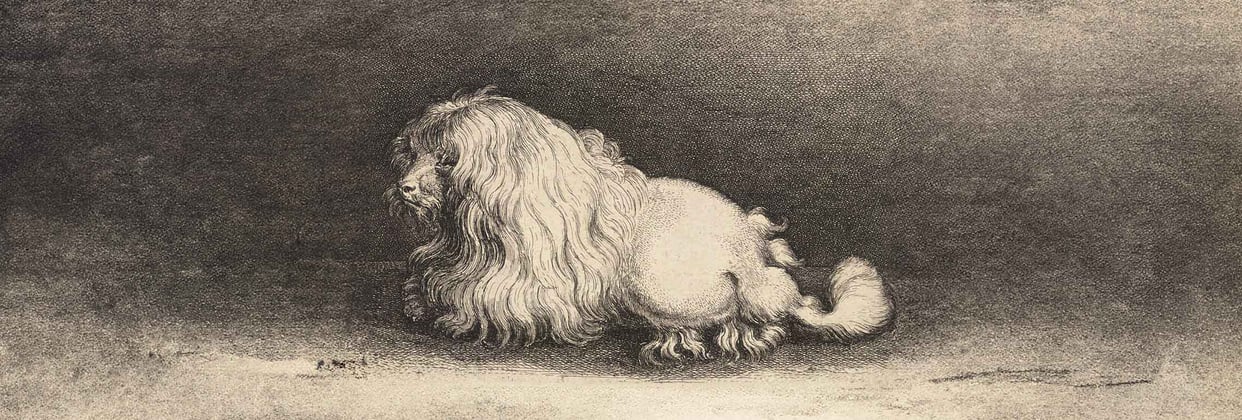

The Cavalier King Charles Spaniel, originating from England, brings elegance and a warm disposition to the mix, while the Poodle contributes its renowned hypoallergenic coat and remarkable intelligence. By blending these qualities, breeders aimed to create an ideal friend for families seeking a loving and clever pet that's also manageable for those with allergies.
As time went on, the Cavapoo's appeal grew stronger, captivating dog enthusiasts worldwide. However, it's important to note that, as a mixed breed, individual Cavapoos can vary significantly in appearance and temperament based on their unique parentage.
How much is a Cavapoo puppy (UK)?
The cost of a Cavapoo puppy in the UK can vary widely, typically ranging from £1,000 to £2,500 or more, depending on factors like the breeder's reputation, demand, and the puppy’s lineage and coat colour. It's also essential to consider ongoing expenses such as veterinary care and supplies. Prioritising responsible breeders is important for the dog's health and behaviour.
For the most current and accurate pricing information, it's recommended to consult reputable breeders and breed-specific sources such as The Kennel Club UK.
Colours and coat types
Cavapoos can come in a variety of coat colours due to their mixed parentage from the Cavalier King Charles Spaniel and the Poodle. Some common coat colours for Cavapoos include:
Solid colours: These include shades like black, white, cream, apricot, and red.
Bicolor: This includes combinations like black and white or red and white, where the coat is primarily one colour with distinct patches of another.
Tricolour: These dogs have three distinct coat colours. In the case of Cavapoos, this typically includes a white base with patches of black and tan.
Parti-colour: This refers to a coat with larger patches of two or more colours, often including white as one of the colours.
Phantom: A phantom-coloured Cavapoo has a coat with one main colour and ‘phantom’ points of another colour. For example, a black and tan phantom might have a mostly black coat with tan points on the eyebrows, legs, and other areas.
Merle: Some Cavapoos may inherit the merle gene from the Poodle parent, resulting in a marbled or mottled coat with a mix of colours and patterns.
Sable: A sable Cavapoo has a coat that appears to have different colours when viewed in different lighting or angles. The coat often has a mix of darker and lighter hairs.
It's important to note that coat colours and patterns can vary widely within the Cavapoo breed due to the influence of both parent breeds. If you're looking for a specific colour or pattern, it's recommended to communicate your preferences with reputable breeders, but also keep in mind that the health and well-being of the dog should be a priority over coat colour.



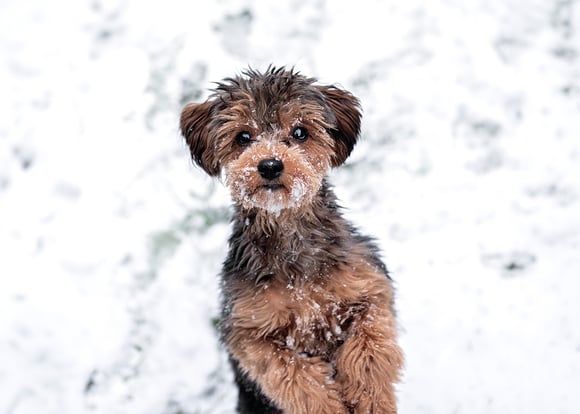

Size and weight
Cavapoos can vary in size based on factors such as their lineage, the size of their parent breeds (Cavalier King Charles Spaniel and Poodle), and the specific type of Poodle used in breeding (Toy, Miniature, or Standard). On average, here's an estimate of their size range:
Temperament and behaviour
Temperament
Cavapoos possess a range of endearing traits that make them fantastic companions. Their friendly and sociable nature is a result of the blend of their parent breeds, making them affectionate and eager to please. Their intelligence, inherited from the Poodle side, contributes to their quick learning and responsiveness during training, whilst the sensitive and sweet nature of the Cavalier King Charles makes them adaptable and family-friendly.
Cavapoos generally make wonderful companions for kids due to their easygoing and gentle nature. Their mixed lineage often results in a patient temperament that's well-suited for interacting with children. However, as with any dog breed, early socialisation and proper training are important to ensure positive interactions between Cavapoos and kids.
Cavapoos can also get along well with cats and other pets, especially when introduced to them at a young age. Their adaptable nature often allows them to form positive relationships with different animals. Nevertheless, individual temperament can vary, so gradual introductions, along with monitoring and guidance, are advisable when bringing Cavapoos into homes with existing pets.
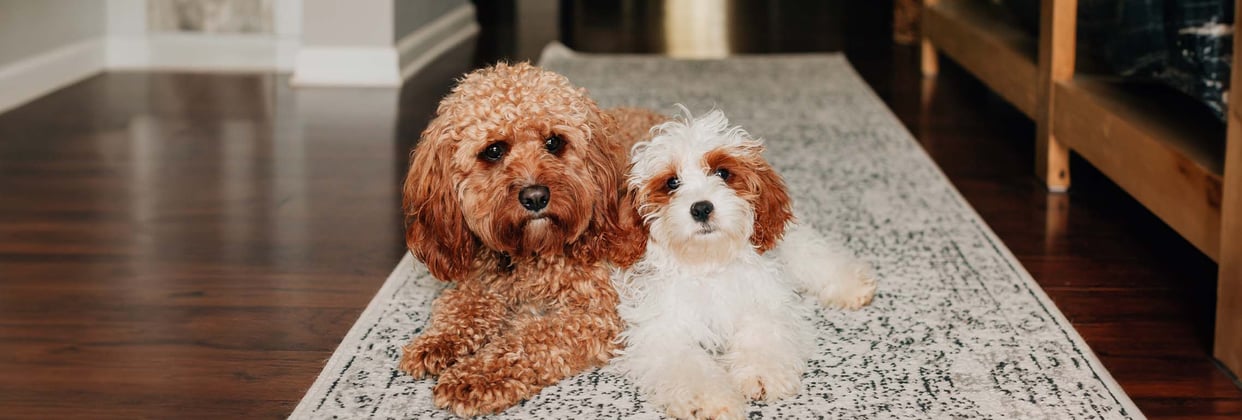

Behaviour
Cavapoos often display very affectionate behaviour, which allows them to form strong bonds with their human companions. Their intelligence and adaptability contribute to their overall positive demeanour, making them responsive to training and well-suited for various living environments.
Cavapoos can be prone to experiencing separation anxiety, as their strong attachment to their owners makes them more susceptible to distress when left alone for extended periods. Gradual training to become comfortable with short periods of separation and providing engaging toys or activities while alone can help alleviate potential anxiety.
Cavapoos can be left alone for moderate durations, but their tolerance varies from individual to individual. Adult Cavapoos generally handle alone time better than puppies, and their adaptability allows them to adjust to a regular schedule with proper training. Ensuring they are adequately exercised and mentally stimulated before being left alone can contribute to a more positive response to solitude.
Cavapoos can also adapt to living in various spaces such as apartments, thanks to their size and moderate energy levels. However, regular exercise and mental stimulation are essential, even in a smaller living space. Interactive play, daily walks, and engaging toys will help keep them content and prevent behavioural issues that can arise from pent-up energy. Additionally, their low-shedding coat, inherited from the Poodle side, can be an advantage in apartment living meaning less time spent hoovering the couch and more time on walkies.
When it comes to barking, Cavapoos typically have a tendency to be a tad vocal. Their barking behaviour can be influenced by various factors, including their individual temperament, their upbringing, and their environment. As a mixed breed, Cavapoos may inherit traits from both the Cavalier King Charles Spaniel and the Poodle parent breeds, each of which can contribute to their vocal tendencies.
Cavalier King Charles Spaniels are known for their friendly nature, which can sometimes translate into a tendency to bark when they want attention or when they sense something unusual in their surroundings. Poodles, on the other hand, are intelligent dogs that might bark as a response to stimuli or as a way to communicate.
Training a Cavapoo
Cavapoos are recognised for being very clever, often inheriting this trait from their Poodle parent. This aptitude for learning makes them receptive to training efforts and enables them to grasp a variety of commands and tricks. While their intelligence is a valuable asset, it's important to remember that training approaches might need to be tailored to each individual dog, as temperament can vary within the breed.
When it comes to successfully toilet training a Cavapoo puppy, consistency and patience are key. Initiate training early by establishing a designated outdoor potty area (or by using puppy pads) and taking your puppy there regularly, particularly after meals, sleep, and play. Positive reinforcement, like treats and praise, helps reinforce proper elimination habits, while refraining from scolding for accidents helps to prevent anxiety. Incorporating crate training can be advantageous, too, as dogs naturally avoid soiling within their rest area.
Cavapoos generally exhibit a commendable level of obedience, thanks to their eagerness to please and their inherent intelligence. We recommend beginning training as soon as your Cavapoo puppy arrives home, focusing on fundamental commands such as "sit", "stay", "come", and "down."
Employing positive reinforcement techniques, including treats, praise, and toys, will help them to learn, understand, and perform well. It’s also important not to forget about socialisation. Exposing them to diverse people, animals, settings, and situations will help your Cavapoo grow into a well-adjusted and confident adult dog.


Shedding and grooming
How often should I brush my Cavapoo?
Cavapoos have a coat that can vary in texture and length, so how often you have to brush will ultimately depend on these factors. Generally, brushing your Cavapoo's coat two to three times a week helps prevent matting, remove loose fur, and maintain a healthy coat. However, if your Cavapoo has a curlier coat inherited from the Poodle parent, more frequent brushing might be necessary to prevent tangles and mats.
How often should I bathe my Cavapoo?
Bathing your Cavapoo doesn't need to be too frequent. Generally, a bath every four to six weeks is sufficient, unless your dog gets particularly dirty or starts to develop an odour. Over-bathing can strip the coat of natural oils and lead to skin problems, so it's important not to overdo it. Regular brushing between baths can help keep your Cavapoo's coat clean and tidy (and, of course, will keep them smelling fresh).
How often should I cut my Cavapoos hair?
Cavapoo haircuts can vary based on personal preference and the specific coat type your dog has. Some owners opt for professional grooming every 6 to 8 weeks to maintain a tidy and manageable coat length, especially if the coat grows quickly. Regular trimming around the eyes, ears, and paws helps keep your Cavapoo comfortable and prevents overgrowth that could potentially obstruct their vision or cause discomfort to the eyes or nails.
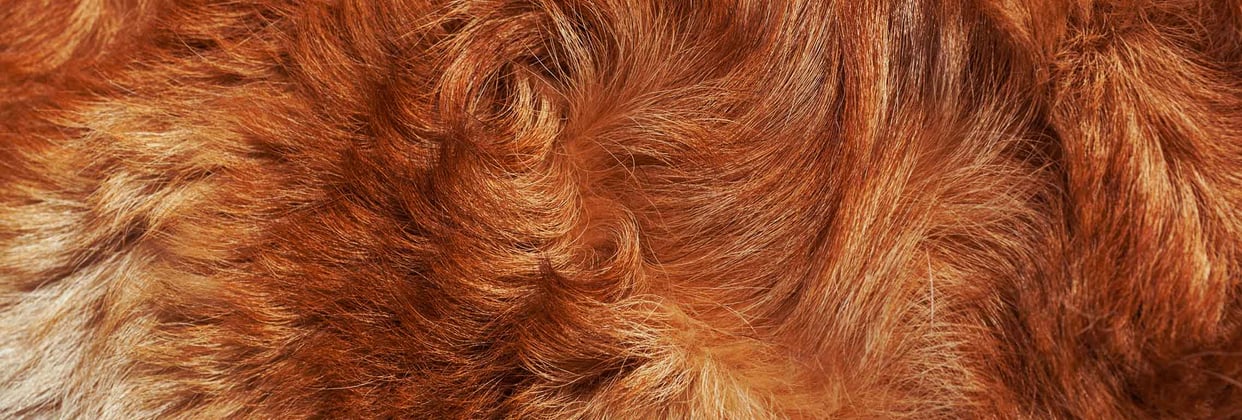

Do Cavapoos shed?
Cavapoos are often considered low-shedding dogs due to their Poodle ancestry. This means they shed less hair than some other breeds, making them a good choice for individuals with allergies or those who prefer a cleaner living environment. Additionally, Cavapoos tend to produce less dander, which can further reduce allergic reactions.
Do Cavapoos drool?
Something Cavapoos are not known for is excessive drooling. Their drool production is generally minimal compared to some larger breeds. However, individual dogs can vary, and factors like excitement or heat can influence drooling to a small extent.
How often should my Cavapoo’s nails be trimmed?
Regular nail care is an important factor for Cavapoos. Long nails can be uncomfortable for them and might cause joint issues or difficulties walking. Nails should be trimmed every few weeks or as needed, ensuring you don't cut too close to the quick (the sensitive part of the nail). If you're unsure about trimming nails, you should always consult a professional groomer or a veterinarian for guidance.
Exercise needs
Cavapoos have moderate exercise needs that can be tailored to fit different lifestyles. As a blend of the lively Poodle and the more relaxed Cavalier King Charles Spaniel, they typically require around 30 to 60 minutes of physical activity each day. This might include brisk walks, playtime in a fenced yard, interactive games, and mental stimulation through training or puzzle toys. However, it's important to consider your individual Cavapoo's energy level, age, and health when determining the appropriate amount of exercise, as each dog is different!
Though they have a very agreeable nature and can thrive in various living environments, regular exercise is still required to burn off excess energy. It also prevents behavioural issues that can arise from boredom.
Engaging in activities that challenge their intelligence, such as training sessions or hide-and-seek games, can provide both mental and physical stimulation. Remember that while they enjoy being active, overexertion should be avoided, especially during hot weather, as their fairly flat muzzles can make them more susceptible to heat-related issues.
Feeding and nutrition
When it comes to feeding, we know you want what’s best for your pet. Nutrition is one of the most important aspects of owning a dog, so it’s best to get clued up before bringing your Cavapoo home.
Adult Cavapoos typically eat about two meals a day: breakfast and dinner. Though every dog is unique, most owners follow guidelines of about 1 cup of adult dog food per day, divided between the two meals. You should remain consistent in your feeding times to help your support dog’s digestive system.
When it comes to deciding what to feed your Cavapoo, the good news is that you’ve got plenty of options. Some owners opt for raw food, whereas others prefer a more tailored mix of cooked meat, like the one provided by Butternut Box, one of our reward partners.
Butternut Box provides freshly-prepared, perfectly-portioned meals using human-quality meat and vegetables. By gently cooking their food to create simple, tasty, and complete meals, Butternut Box achieves the right balance of vitamins and minerals for dogs of every age. Best of all, Waggel members get 50% off their first two boxes!
If your pup prefers kibble, why not grab a bag for free with Tails.com? You’ll also get 50% off your entire order with them. (Again, this offer is only available for Waggel customers.)
It's important to follow the feeding recommendations on the dog food packaging and consult your veterinarian for precise guidance tailored to your Cavapoo’s needs, especially if they are on a fresh, wet, or raw diet. Adjust the portion size based on your dog's weight and body condition to maintain a healthy weight.
Cavapoo common health issues
Cavapoos are considered a generally healthy dog breed, living up to around 12 to 15 years, however, this doesn’t mean they’re immune to developing health conditions.
It’s widely understood that mixed-breed dogs aren’t as susceptible to health issues as their purebred parents, but this isn’t entirely true. Hybrid dog breeds can still be prone to the same conditions as their parent breeds, so it’s best to research common health issues before settling on the breed you want.
To help you gain a better understanding of the conditions, treatment and insurance claim costs associated with Cavapoos, we’ve compiled the following list with data based on claims from 2022 to 2023:
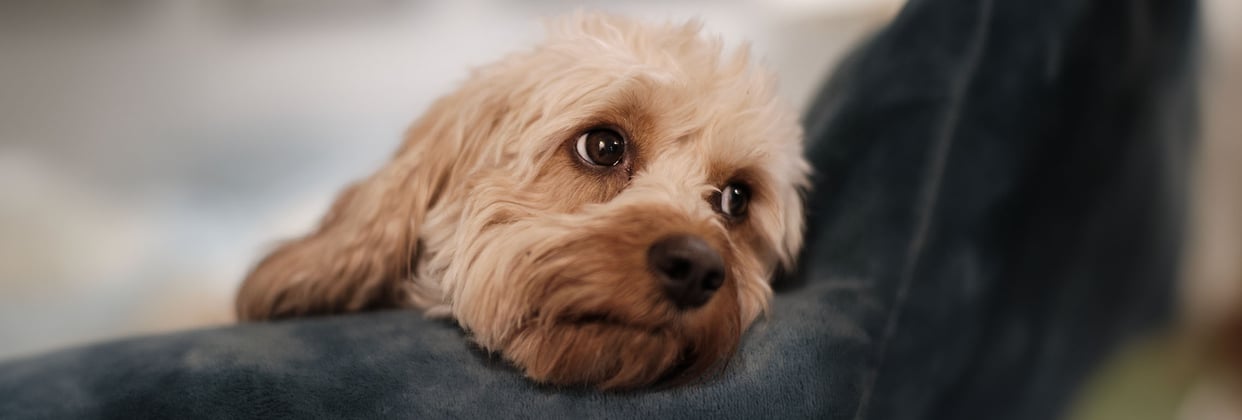

These are approximate figures and can change over time due to inflation and developments in veterinary care practices. Though the above treatment prices can seem costly, pet insurance provides financial coverage for a portion of your pet’s medical expenses - a portion you can set yourself! By paying a regular premium, you can ensure that you have financial support when unexpected veterinary bills arise.
Waggel Pet Insurance provides peace of mind and Lifetime protection against a range of potential health issues, including conditions like cataracts, luxating patellas, and more. With Waggel, you can rest assured that your pet's health concerns are financially supported, allowing you to focus on what’s most important: being the best pet parent possible.
Pet insurance for Cavapoos
If you’re considering getting a dog, you’re probably already familiar with pet insurance. But do you know just how essential it is? Long story short, Waggel Pet Insurance ensures that your new companion receives the best possible care without financial worries.
Unexpected illnesses and accidents can happen at any time. However, at Waggel, we provide peace of mind, allowing you to make decisions based on your pet's well-being rather than cost. To explore coverage options tailored to your pet's needs, get a free quote today.
As a Waggel member, you’ll also get exclusive access to our membership platform. Here, you can find Joii, a 24/7 online vet care provider connecting you to a vet whenever you need help. You’ll also be able to book behaviour and nutrition consultations with Junior Hudson, a holistic canine wellness expert from Companion Animal Wellness.
However, it doesn’t just stop there. You’ll also receive personalised perks, discounts and deals every month to suit both you and your pet. What’s not to love?
